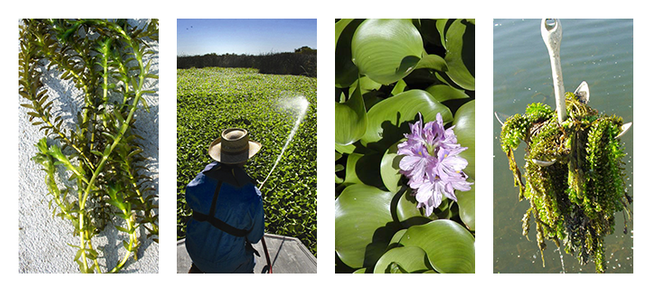Back in October, a Delta farmer presented me with this scenario: The California Division of Boating and Waterways would be clearing water hyacinth from some Delta waterways. They asked the grower to receive some of it onto his land. Could there be any potential problems with receiving it? Let's take a step back from this scenario to understand why the Division would be looking to dispose of water hyacinth in this way.
According to the Division, water hyacinth was introduced into the Delta from South America over 100 years ago. It can be considered an attractive plant for its purple flowers, but its floating nature and potential to double in size every ten days under warm weather conditions makes it a difficult plant to keep under control in the Delta. It can impact recreation and commerce because mats of it can grow up to six feet thick, restricting boat traffic, and it can impact agricultural operations by clogging intake pumps. It also impacts the Delta ecosystem by out-competing native plants, blocking light into the water, and reducing dissolved oxygen. 
The Division conducts an aquatic weed control program in the Delta, and additionally, UC Davis researchers are conducting projects to evaluate methods for controlling water hyacinth. Nevertheless, when water hyacinth spreads as rampantly as it has in recent years, the grower's scenario deserves some consideration as a way to mitigate the problem. After consulting with UC Cooperative Extension colleagues, we surmise that there probably would not be much harm in this grower accepting un-composted water hyacinth onto his fields. My colleagues and I believe that this would work best in warm weather so that the water hyacinth would dehydrate and decompose quickly. (Back in October, we still had some warm weather. It would be less advisable now that the weather has cooled.) Before having the material applied, we suggested that a wet sample of the material be dried, the percent moisture calculated, and the dried material tested for nutrient, salt, and metal content, so that the grower knows the concentrations of these in the plant material. The grower should also ask the total wet weight of material that would get applied so that he can calculate the total amount of nutrient, salt, or metal that would be applied to his land. We do not suspect any toxicities, but testing the material would help to confirm that. We do not suspect this would be an economical practice if the water hyacinth needed to be transported over a long distance because of the heavy fresh weight of water hyacinth. Provided there are no nutrient, salt, or metal concerns, and if there are fields adjacent to clogged waterways where growers are willing to accept the material, this could be a way for the grower to add organic matter to his soil and for the Division to reduce the presence of an aquatic pest.